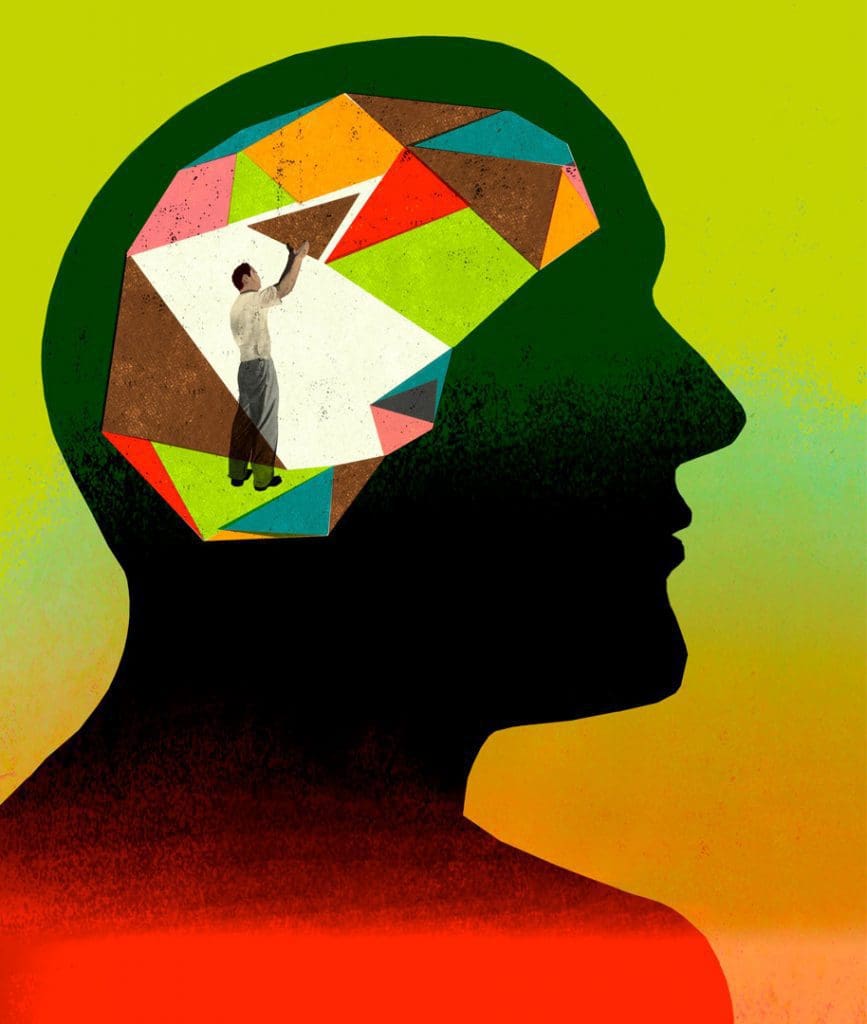Seeing with the Brain

When an area of the brain can’t be used for its original purpose, what happens to it?
Researchers have known for a while that the brains of blind people “recruit” the visual cortex for other purposes, but they didn’t know whether those purposes were the same for everyone or varied from person to person.
In a recent paper, cognitive scientist Marina Bedny and colleagues showed that the purpose is very similar across most blind people, indicating the existence of an organizing system responsible for the repurposing process. They also found that the visual cortex region’s activity was related to making meaning from language, suggesting that it is being repurposed for higher-order functioning.
“These data suggest the region is doing something more complicated that has something to do with meaning and language,” says Bedny, noting that this is not the first evidence pointing in that direction.
Bedny and her team are interested in why certain regions of the brain do certain tasks, and whether those roles are influenced more by genetics and evolution or by the individual’s life experience. Studying brains that do not receive the typical input—like those of people without sight or hearing—can offer important insight into that question. “How far from my evolved function can I go?” asks Bedny, an assistant professor in the Department of Psychological and Brain Sciences.
The team presented blind subjects with a variety of auditory input to find out whether their brains repurposed their visual cortices in similar or more random ways. In 65 percent of their subjects, they found correlation in how those regions were repurposed.
While many brain studies use highly targeted and controlled tasks to understand specific regions and functions, Bedny says there’s a move in science toward using more naturalistic stimuli to better understand how the brain operates in the real world. So her team asked both blind and sighted people to listen to audio tracks from movies—the action thriller Taken and the horror film The Conjuring—and a comedic routine from a skit called “Pie-Man,” which is frequently used in brain studies. Sounds included people talking and moving and cars crashing.
They played the clips three different ways: in their original form, scrambled, and backward, and monitored activity in the visual cortex. What Bedny’s team found especially intriguing was that the blind subjects’ visual cortices correlated most closely with one another during the standard recording, moderately during the scrambled versions, and very little during the backward versions. Those data indicate the presence of an underlying system inherent to the brain’s structure that determines repurposing during those tasks involved with language and meaning.
The findings are just one stop along the journey for Bedny’s team. The researchers are continuing to dissect the question of which parts of the brain might be repurposed for linguistic versus math functions, for example, in their quest toward a larger understanding of the role of the individual’s experience versus the brain’s anatomical patterns in predicting which parts will do which functions. This focus stems from their belief that the ability to adapt in fundamental ways may be an important part of the human brain in general, as seen when learning skills that force the brain to do things it didn’t evolve to do, like programming a computer or doing highly advanced math.
Such basic science explorations could one day translate to applications in the treatment of brain damage from stroke or other causes, Bedny says: “Studying plasticity and brain development has huge implications for when to treat brain damage. Can you get someone with brain damage to use different parts of the brain? Can we harness the ability of the brain to retool to help it remediate as a result of damage or disorder?”




